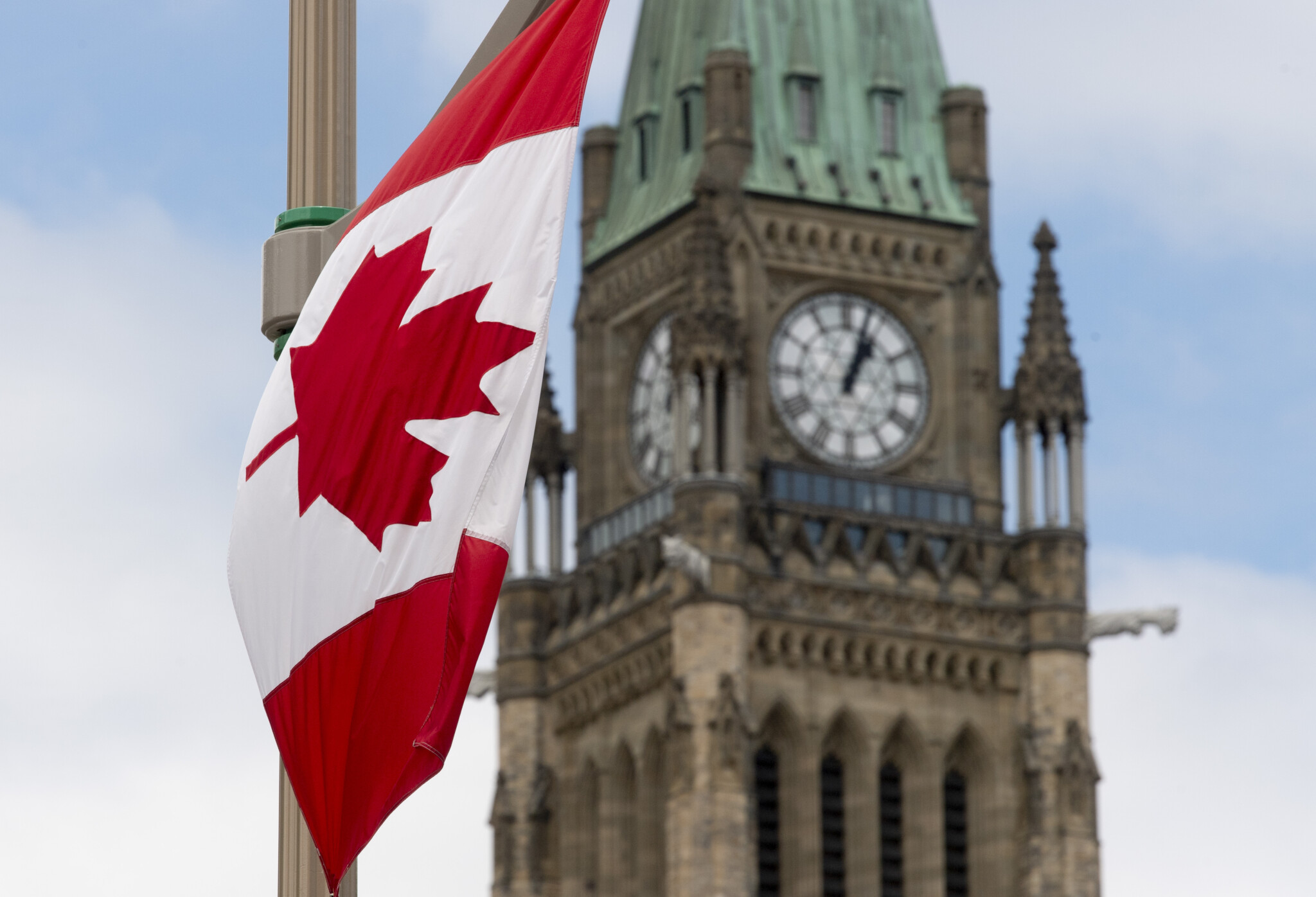It was an old idea. It remade the future. It was a calculated gamble, an act of faith. Pragmatic and illogical. Defensive and bold, at times romantic and eventually magnificent. Such was the grand enterprise to bring together Great Britain’s North American colonies into a federal union, fashioned by regional politicians who were strangers to each other. And then there were the instigators who knew each other all too well, having spent years trying to bury each other. It was a messy, haphazard journey, full of curve balls and jolts and endless reasons not to proceed.
The person who, aiming at a different target, inadvertently launched the venture in 1864 was not the man one would assume, Sir John A. Macdonald, but rather the prim, pious George Brown, publisher of Upper Canada’s most powerful newspaper, The Globe. He was not driven by grand visions of British North American union. Bigoted, strident, he was obsessed with freeing his Protestant, anglophone Upper Canada from Catholic, francophone Lower Canada, forced together in a shotgun legislative marriage decades before. He proposed a parliamentary committee to remake and segregate the unhappily united Canadas within a federal structure. In those debates, a wider confederation of all the colonies emerged as merely another option.
And what of John A., the wise, at times unscrupulous, artful dodger we rightly prefer drunk to the self-righteous Brown sober? He had espoused British North American union over the years but was typically ambivalent about such an abstract proposition fraught with so many obstacles. When his nemesis launched the committee, Macdonald, ever cautious, calculating, held back at first. Then he saw the assembly vote in favour of Brown’s proposed committee and as he did so often, pivoted when he sensed a different game in the offing and joined the committee. In this shift, there was undoubtedly—how could there not be?—the personal factor.
One of the most insightful historians of this era, Professor Ged Martin observed, “It is hard to avoid the conclusion that, by the early eighteen-sixties, the initial chapter of Macdonald’s political career was running out of plot…Confederation came along at just the right moment to provide new horizons and a fresh phase.” Not one to be left behind, Macdonald would take centre stage and, ironically, come to embody the new country in the making.
It is possible that Brown’s parliamentary inquiry into the future of the Province of Canada would have bogged down into more stalemate, but then the shaky government fell apart on the very day he delivered his report. Instead of all the usual suspects going through stale familiar motions to cobble together yet another rickety government, the crisis inspired a burst of brilliance. To his enormous credit, and quite out of character, Brown compromised—always a C word in his lexicon—and agreed to enter into a coalition—another C word—with Macdonald and various other opponents to form a new government that would explore the future for their bickering province. His prime directive remained creating an escape hatch for anglophone Upper Canada. He would take it any way he could get it, even if that entailed confederation. Macdonald was now looking at a much larger canvas.
In September 1864, the Canadians traveled to muse and wonder with their fellow British subjects in the Far East. Physical and mental distances were formidable. During the Charlottetown conference, Brown writes of meeting an “amazingly civilized” daughter from a wealthy family who had never left the island to set foot on the neighbouring mainland of Nova Scotia. She was, Brown learned, hardly unique. Somehow Confederation would have to transcend this cloistered life.
The argument for domestic union was reinforced by international catastrophe. By 1864, Americans had been slaughtering each other for three years. Watching neighbours set their world on fire, mindful the civil war might spread across the border, the Canadian proposal to unite the British colonies seemed more and more necessary. Anxious not to find themselves dragged into defending their colonies against an important trading partner, the Mother Country encouraged and smoothed the windy road to Confederation. The Canadians, Nova Scotians, New Brunswickers, and PE Islanders kept talking. In this period, Brown noted, “there is one thing peculiar about our position. There is no other instance on record of a colony peacefully remodelling its own constitution—such changes have always been the work of the parent state and not of the colonists themselves.”
And then the initial momentum derailed. In New Brunswick, voters threw out the pro-Confederation government in 1865. The following year they reversed course and ditched the anti’s. Nova Scotians were divided—some quite hostile—but the government maintained power. Prince Edward Island and Newfoundland looked in and stayed out. This ambivalence underscores a striking internal contradiction. Confederation split the Province of Canada into Quebec and Ontario and fused them with Nova Scotia and New Brunswick into a new state, a new country. But this same act of unity was also used to carve out breathing room for the new provincial governments determined to manage local affairs. So in one move, we came together and kept our distance.

Several of the Fathers of Confederation photographed at the Charlottetown Conference in Sept. 1864 where they had gathered to consider the union of the British North American Colonies. Sir John A. Macdonald and Georges Etienne Cartier are in the foreground/CP PHOTO, National Archives of Canada, PA-091061.
The first draft of Confederation in 1867 was modest compared to what we take for granted today and was completed in fits and starts. Manitoba and the North-West Territories joined in 1870, British Columbia in 1871, Prince Edward Island in 1873. Saskatchewan and Alberta entered in 1905, and finally—and only barely—Newfoundland in 1949.
The work-in-progress could feel a bit dicey at times and nearly came apart during two world wars, but it held. It came close to fracturing in the separatist upheavals running through the 1960s into the 1990s, but it held. The union is all too often undermined by petulant provincial premiers who act like the national government is a hostile, foreign entity. In this current season, the legitimacy of the country is denigrated by self-righteous citizens who likely know nothing about their own history. But the great work holds.
So here we are, still.
We are not one of the oldest nations around but we have created and sustained one of the oldest and most successful federations in the world; older than Germany (est. 1871), on par with Italy (its unification beginning in the 1860s), older than the former Dominions, (Australia amalgamated its federation in 1901). Unlike Germany and Italy, unlike Spain, France, Portugal, so much of Eastern Europe and South America and Africa and Asia, we are one of the world’s oldest continuous democracies—big emphasis on continuous. And this highlights another quality in this unfolding odyssey. Confederation is not an end state. We’re still at it. I hope we will bring in the many Indigenous nations left out in the 1860s and afterward. Given our tendency towards inclusion and justice, I believe we will.
Let us end where the tale began, with Brown, who paid a visit to the work site of the parliament buildings being raised in the newly chosen capital, Ottawa—a capital intended for the smaller united province but which ended up serving as the capital for the new Dominion of 1867. Brown was awed by the vast sprawl of sweat, stone, and lumber. “They are really magnificent…A hundred years hence the people will fancy the men of those days were giants in imagination if not in ability.”
Indeed. Happy Dominion Day.









